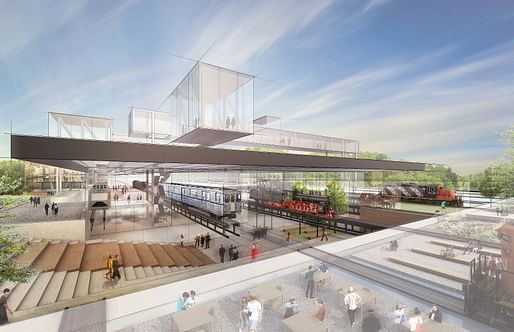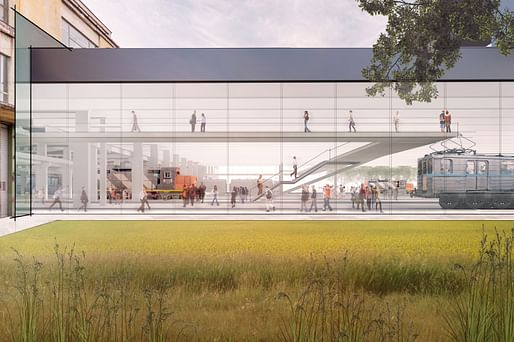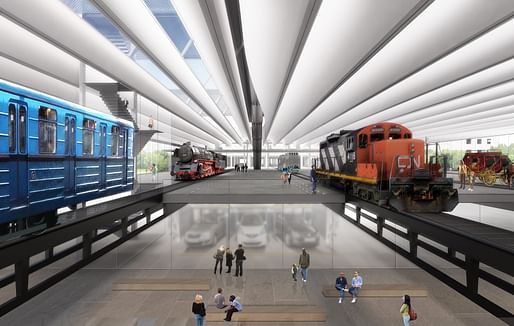
Last year, an international roster of renowned architecture teams were invited to compete to redesign the Hungarian Museum of Transport, one of Europe's oldest transport museums. Two years ago, the museum left its former home in Városliget and the Hungarian government had them relocate to a 7-hectare area in Kobánya, a former industrial district in Budapest.
Winning over teams led by big-name firms like BIG, Amanda Levete Architects, David Chipperfield Architects, Caruso St John Architects, Lacaton & Vassal, and others, Diller Scofidio + Renfro with local architect Tempannon ultimately had the winning proposal. Second place went to Reichen and Robert & Associés + PLANT Atelier Péter Kis + Ralph Appelbaum Associates. Third place went to Építész Stúdió Kft., while Honorable Mentions were each given to gmp International GmbH and Foster + Partners with CÉH Zrt.
DS+R shared more details of their proposal below.

Using the role of ground transportation as an organizing principle, the proposal “de-familiarizes ground — an often overlooked, everyday surface — by excavating, lifting, and cutting this plane to produce immersive and unexpected environments,” DS+R says.

One of the main elements of DS+R's redesign is the new Forecourt, a communal “place of decompression” that will be a “mosaic” of paved and landscaped areas including outdoor galleries, picnic area, shady bosques, a cafe, playground, and outdoor community spaces of the Törekvés Cultural Center. The Forecourt will also include a part of the museum's collection of transport artifacts, like locomotives and carriages that once traveled across the fields and streets of Hungary.
The ground level has galleries, storage spaces for large vehicle, as well as intermittent access from below, which allow for rare undercarriage views, the firm says. “Double height spaces slice through the ground, exposing subsurface infrastructure.” This layered environment continues throughout the scheme. A hovering mezzanine offers overhead views of exhibition and access to the museum's collection storage. Special galleries, educational spaces, and a museum cafe (with views of the surrounding cityscape) are all located on the “floating ‘second ground’” above the Gallery Hall roof.

Another distinctive element of DS+R's design is how the new Gallery Hall fuses with the historic Diesel Hall, which was built between 1958-62 and comprises of nine parallel naves that are each 110 meters long. The naves will be adapted for exhibiting and storing the museum's large items like railway wagons, tramway cars, buses, and other vehicles. The new Gallery Hall will be “slid halfway into the Diesel Hall, projecting into the Forecourt to increase needed space and provide reinforcement for the Diesel Hall structure.”
You can learn more about the design here.

Land Art Generator Initiative 2025 Fiji: Climate Resilience for Island Communities
Register/Submit by Mon, May 5, 2025

The Home of Shadows / Edition #3
Register by Wed, Jan 29, 2025
Submit by Mon, Mar 3, 2025

MICROHOME Kingspan 2024/25
Register by Thu, Feb 13, 2025
Submit by Tue, Mar 18, 2025

250,000 € Prize / HOUSE OF THE FUTURE 2024/25
Register by Wed, Apr 30, 2025
Submit by Mon, Jun 2, 2025
No Comments